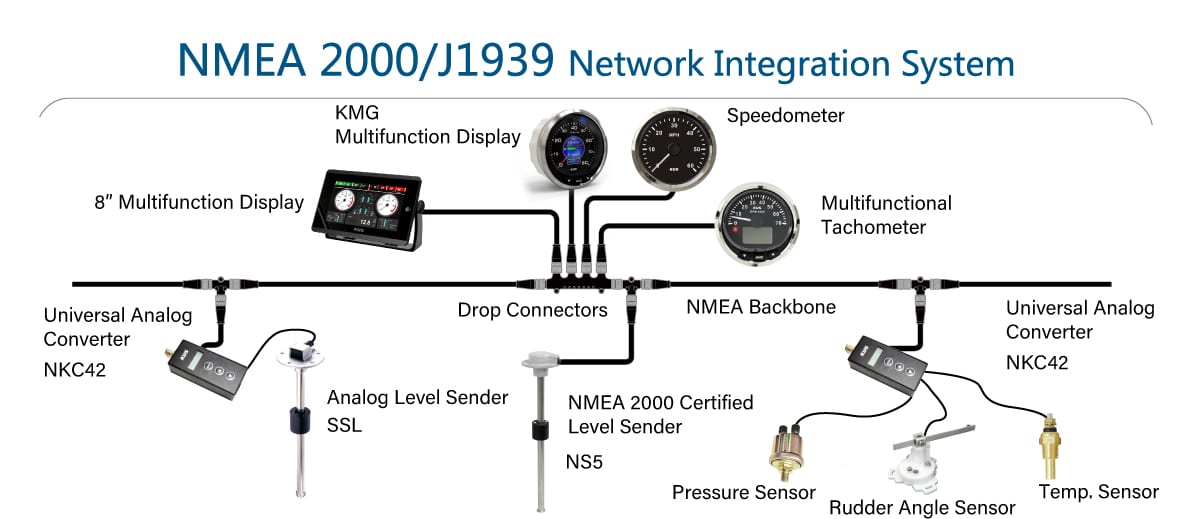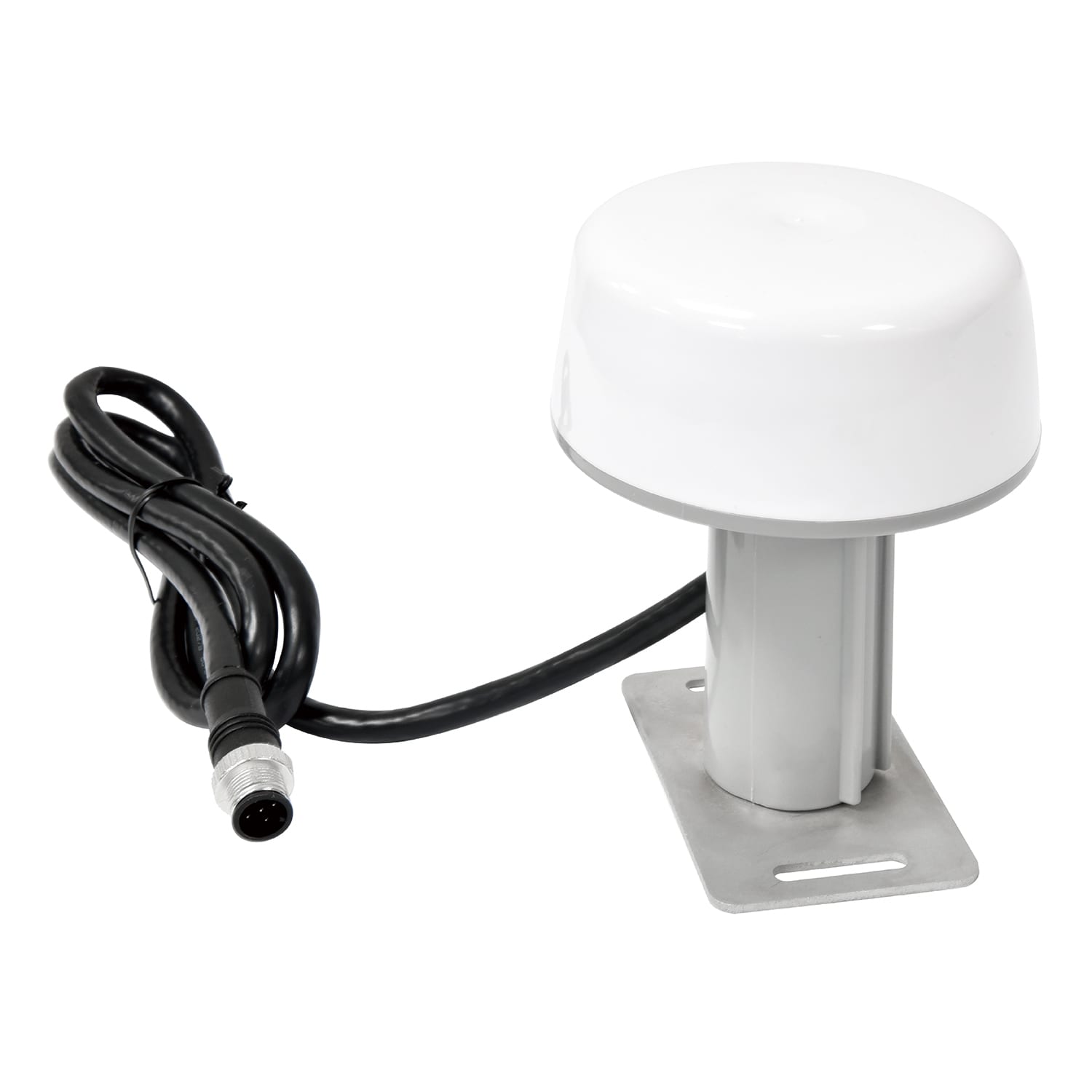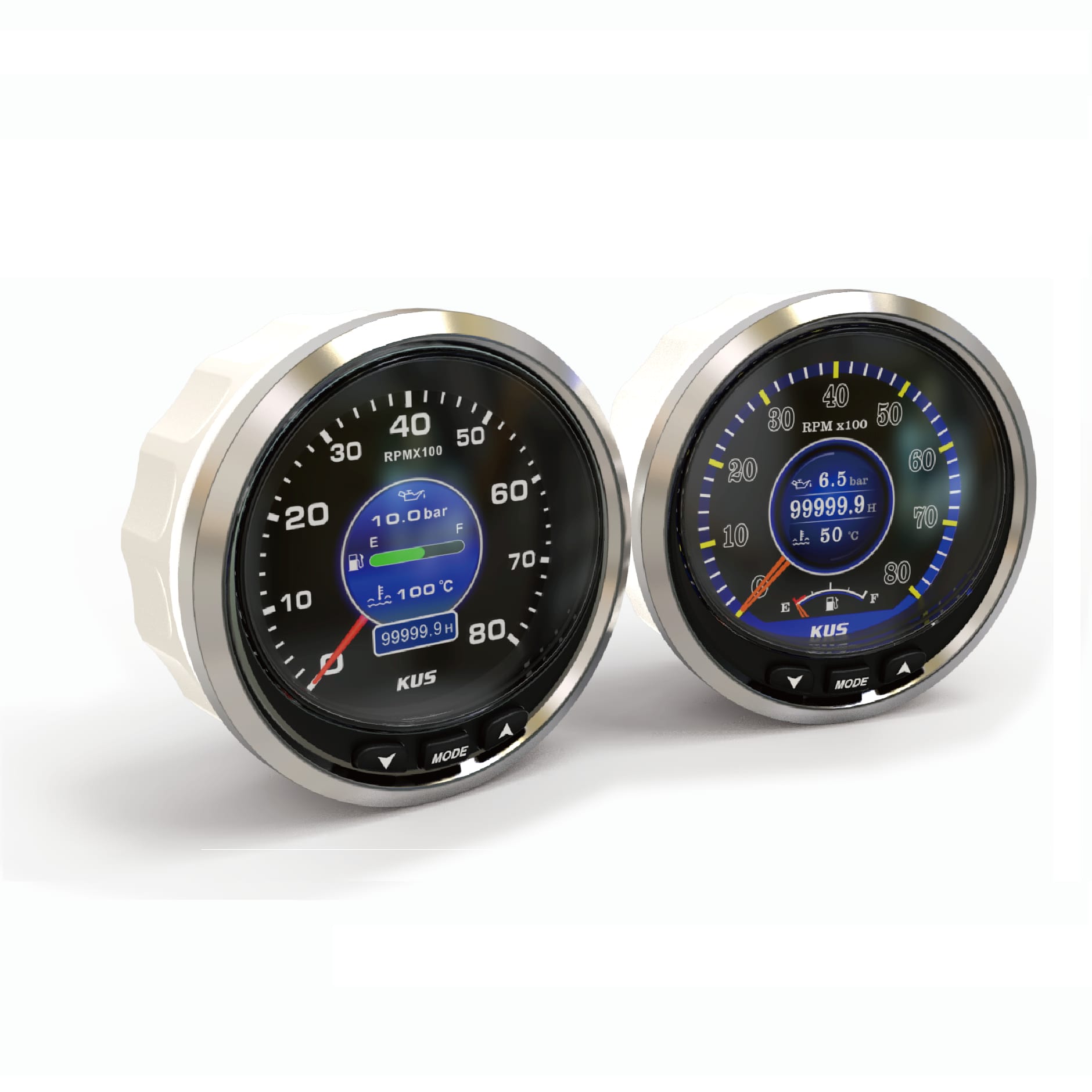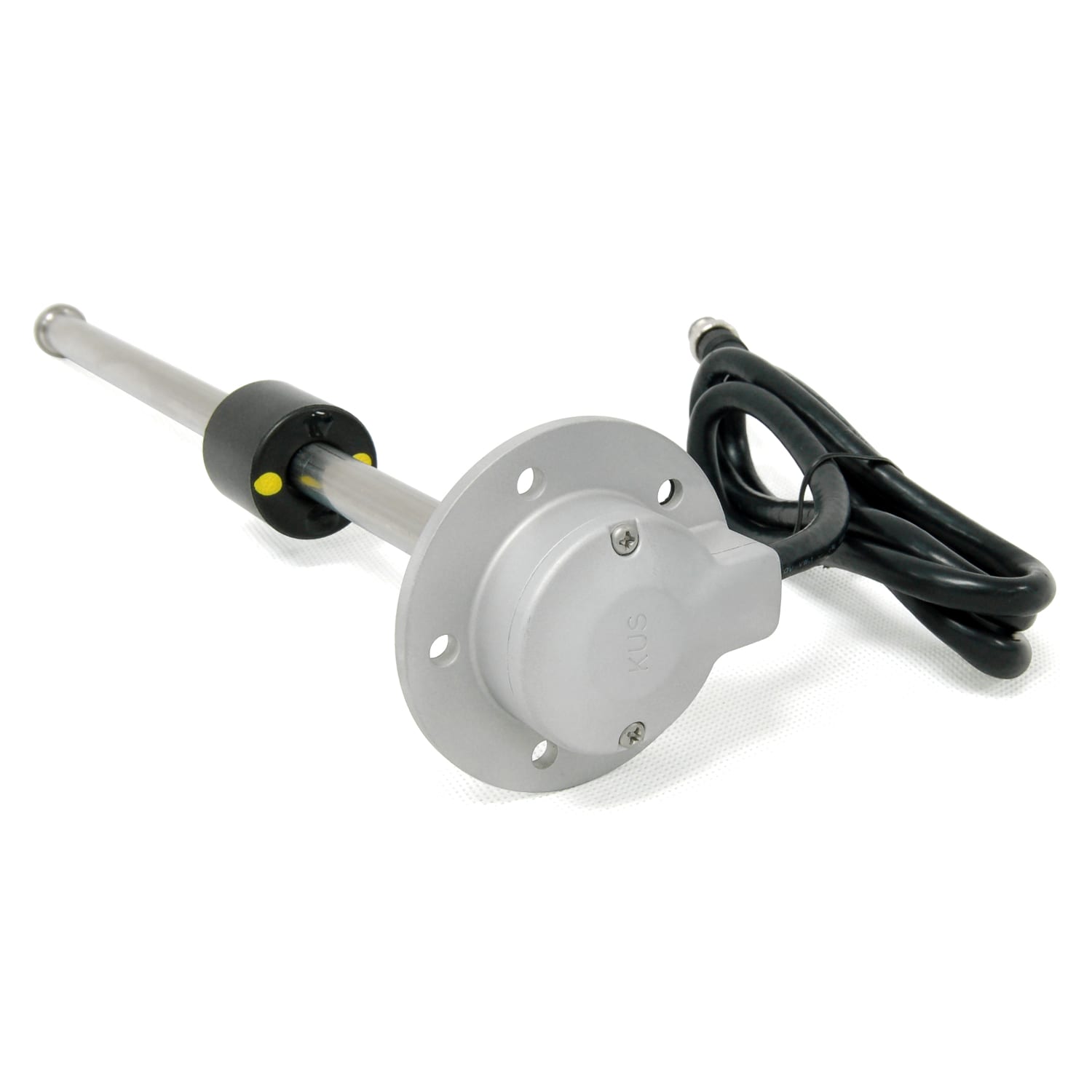NMEA 2000 is a plug-and-play communications standard used for connecting marine instrumentation within vessels. The plug-and-play interface allows devices made by different manufacturers to communicate with each other within the same network without causing interference between devices.
What is NMEA 2000?
The National Marine Electronics Association (NMEA) was founded in 1957 to strengthen the relationships between electronic manufacturers. During its early inception, NMEA focused its efforts on improving communications amongst manufactures. NMEA 1803, and its successor NMEA 2000, are plug-and-play communications protocols developed by NMEA to allow devices made by different manufacturers to communicate with each other.
How does NMEA 2000 work?
NMEA 2000, often abbreviated to NMEA2K or N2K, is the protocol that connects devices using the Controller Area Network (CAN) technology originally developed for the auto industry. NMEA 2000 is based on the SAE J1939 high-level protocol, but instead defines its own messages.
NMEA 2000 devices and J1939 devices can be made to co-exist on the same physical network. NMEA 2000 is a successor to the NMEA 0183 serial data bus standard. It has a significantly higher data rate (250k bits/second vs. 4800 bits/second for NMEA 0183) and uses a compact binary message format as opposed to the ASCII serial communications protocol used by NMEA 0183. NMEA 2000 supports a disciplined multiple-talker, multiple-listener data network whereas NMEA 0183 requires a single-talker, multiple-listener (simplex) serial communications protocol.
The NMEA 2000 network, like the SAE J1939 network on which it is based, is organized around a bus topology, which requires a single 120Ω termination resistor at each end of the bus (the resistors are in parallel, so a properly terminated bus should have a total resistance of 60Ω). The maximum distance for any device from the bus is six meters, the maximum backbone cable length is 100m (328 ft).
NMEA 2000 Inter-connectivity
NMEA 2000 is used to create a system of connected electronic devices, typically amongst marine instruments, on a marine vessel. Instruments that meet the NMEA 2000 standard are connected to one central cable commonly known as a backbone along with other corresponding connectors called t-connectors and drop cables. The backbone serves as a central link between all devices connected to the network by powering each instrument which then relays digital information throughout the entirety of the system.
This allows display units to showcase a multitude of information simultaneously and instruments to work together without conflicting since they share the same corresponding data. If a unit fails or is unresponsive the whole network still communicates information amongst the marine instruments connected. The NMEA 2000 network operates on a 12-volt DC power; connectors with positive and ground wires (with inline fuses for the positive wire) will allow you supply onboard power to the backbone of the network. These power cables should be connected near the center of the backbone in order for the system to function properly.
Common examples of marine instrumentation compatible in the NMEA 2000 network include GPS receivers, auto pilots, wind instruments, depth sounders, navigation instruments, engine instruments, and nautical chart plotters. The inter-connectivity among instruments in the NMEA 2000 network allows systems to use data from another instrument on the network as input for actions or displays.
For example, the signals from the GPS receiver can be used to correct the course for autopilot; or engine RPM and fuel injection rate can be used to calculate the amount of fuel you have left.
NMEA 2000 Certified Products by KUS
KUS has been designing and manufacturing sensors and gauges for the marine industry for over 30 years. As marine enthusiasts start to embrace the new NMEA 2000 network, we feel it is necessary to expand our offerings to ensure consumers are able to get their hands on quality products at an affordable price.
KUS offers a multitude of NMEA 2000 products to fit your needs such as accessories, gauge instrumentation, and liquid level senders, all of which are certified by the National Marine Electronics Association (NMEA) by passing their testing rigorous testing standards.
Accessories
More often than not, people are trying to connect and integrate old and new equipment. If you have older equipment that is still functioning and want to connect it to your sparkling new NMEA 2000 system, a network signal converter is the most economic choice.
The NKC42 Network Converter is a universal adapter that allows you to connect your existing analog equipment to the NMEA 2000 network.
The GPS Antenna receives satellite signal and provides high-precision, real-time location information to the NMEA 2000 and/or J1939 network.
The signal is used for calculating and displaying the location and travel speed of the vessel.
Gauge Instrumentation
The SeaN Series offers easy plug-and-play installation to the NMEA 2000 network while maintaining a clean classic design.
The SeaN series consists of seven single function gauges, and a Integrated Tachometer that also shows real time performance data, such as battery status, engine temperature, oil pressure, and fuel consumption rate.
The KMG Touch/Button gauge is a multifunctional digital instrument developed specifically for boats, yachts, and marine applications. The instrument integrates major functions such as fuel level, oil pressure, tachometer, speedometer, and oil and water temperature all in one device.
The robust and compact design allows users to have more important information available at the same time.
Liquid Level Senders
The NS5 Liquid Level Sender is certified for the NMEA 2000 network. The NS5 can be reset for different fluid types and instances on the NMEA 2000 network using the KUS setup tool.
Based on tried-and-true electric reed switch level detection technology, the NS5 series level sender gives you the same reliability, accuracy, and durability you’ve come to expect from KUS.
Wrapping up
Having a NMEA 2000 network onboard makes integrating and adding new electronics and instruments much easier. For questions on setting up your NMEA 2000 network, or connection issues, it is best to talk to your local NMEA Certified Technicians.
If you want to learn more about KUS’s capabilities and what KUS has to offer, we will be delighted to talk to you. Get in touch with us today!








